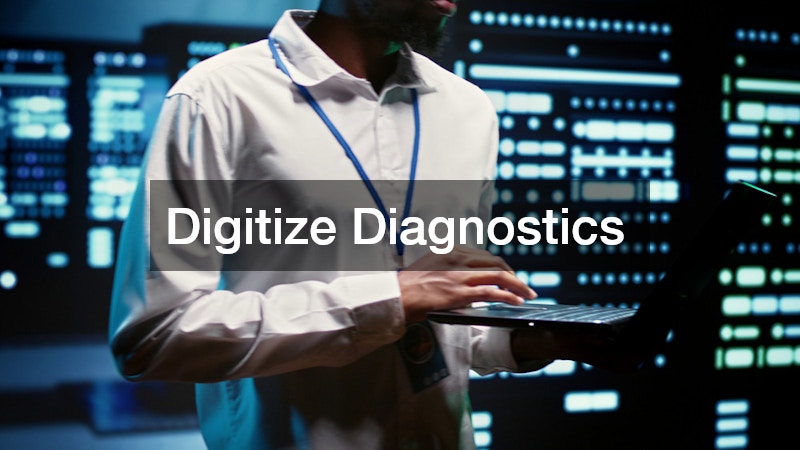
Stay Up To Date On Software Product Enhancement
The fast-paced world of technology demands continual attention to progress and development, as innovation moves at a pace that can redefine industry standards almost overnight. In this ever-evolving landscape, software enhancement stands out as a crucial driver of success, shaping the way businesses operate, compete, and deliver value. It encompasses the strategic refinement of software applications to not only meet current user needs but also to anticipate and adapt to emerging trends and challenges. As organizations strive to remain relevant and efficient, keeping up with the latest updates, tools, and methodologies becomes a business imperative, not just a technical necessity.
Staying informed about software advancements enables companies to improve internal processes, fortify cybersecurity, deliver richer user experiences, and unlock new opportunities through smarter integration and automation. This article will delve into several critical domains where software enhancement plays a vital role, from boosting software development workflows to evolving virtual care systems. With insights into specific areas such as remote deposit capture (RDC) software, access control systems, and smart manufacturing solutions, this discussion aims to provide a comprehensive understanding of the dynamic nature of technological enhancement and its far-reaching impact across industries
Boost Dev Workflow
In the domain of software development, optimizing workflows is a primary focus. The efficiency of a software developer greatly depends on having robust tools and methodologies that streamline coding, testing, and deployment stages. Advanced software enhancement strategies facilitate smoother operations, reduce downtime, and enable faster release cycles. Development teams continuously seek improvements that can automate repetitive tasks, introduce artificial intelligence for error detection, and use machine learning to predict software reliability.
Specifically, software product enhancement within development workflows means implementing innovative platforms like DevOps for continuous integration and continuous delivery (CI/CD). These tools provide software developers with the infrastructure to collaborate seamlessly, even if they are working remotely. By fine-tuning these systems, developers are not only able to meet demanding timelines but also ensure the quality of the software is maintained at high standards.
Refine RDC Tools

Remote deposit capture software has become an essential tool in the digital banking sector, enabling customers to deposit checks remotely using their smartphones or scanners without the need to visit a physical branch. This convenience has made RDC a cornerstone of modern banking services, especially as consumers increasingly expect fast, seamless, and secure financial interactions. As the reliance on digital banking grows, so too does the need for continuous software product enhancement to ensure these systems remain efficient, user-friendly, and resilient against evolving threats.
The evolution of RDC systems requires constant innovation to meet rising expectations around security, compliance, and user experience. Financial institutions must regularly update and enhance their RDC platforms to accommodate technological shifts, such as faster mobile networks, new device capabilities, and changing regulatory environments. These updates are not merely technical—they’re strategic, as they directly influence customer trust, loyalty, and satisfaction.
Diving deeper, enhancing RDC software involves integrating cutting-edge security measures, such as biometric authentication (e.g., fingerprint or facial recognition) and AI-powered fraud detection algorithms that analyze transaction patterns in real time to flag suspicious behavior. These features are essential for protecting sensitive financial data and preventing unauthorized access or fraudulent activity, especially in remote environments where traditional security controls are less effective.
Additionally, developers working on RDC platforms increasingly rely on user feedback and behavioral analytics to continuously refine the interface and usability of these tools. The goal is to create an intuitive, responsive experience that minimizes errors, reduces processing time, and supports users across various devices and accessibility needs. Features like instant check image verification, deposit limit alerts, and real-time status tracking further streamline the process, enhancing transparency and user control.
By prioritizing both security and user experience in their software strategies, financial institutions can position RDC as a reliable, modern banking solution—one that not only meets today’s demands but also scales for the future of digital finance.
Upgrade Access Sys
The need for robust access control systems is more important than ever in today’s security-conscious environment. These systems are critical in managing and monitoring who has access to physical or digital spaces, safeguarding sensitive areas and data effectively. Software product enhancement in this sphere focuses on upgrading access control systems to integrate advanced identification methods, real-time monitoring capabilities, and comprehensive reporting tools.
Specifically, this involves incorporating technologies like RFID and biometric access controls, which enhance entry authentication and efficiency. Enhanced access control systems contribute significantly to security protocols by ensuring only authorized personnel can access restricted areas. Furthermore, software upgrades that facilitate seamless integration with existing security infrastructures boost overall organizational security posture.
Enhance Cyber Def

With cyber threats becoming increasingly sophisticated, businesses must continually fortify their cyber defenses. Business cyber security services rely heavily on software enhancements to keep abreast of emerging threats and to protect sensitive and valuable information. The enhancements include rolling out updates that address vulnerabilities, refining cybersecurity protocols, and deploying intelligent threat detection systems.
Enhancing cybersecurity involves more than just technological upgrades; it requires strategic planning and execution. By adopting cutting-edge software solutions, businesses can predict potential cyberattacks and prepare preemptive defense mechanisms. These advancements also enable companies to rapidly respond to threats, minimizing damage and maintaining customer trust and business integrity.
Simplify Controls
Effective management of access controls is crucial for organizations to ensure security without compromising efficiency. Simplifying controls through software product enhancement allows companies to streamline processes, reducing administrative burden while maintaining stringent security standards. These improvements often necessitate a reevaluation of existing systems and the incorporation of more intuitive software interfaces.
To achieve this, companies focus on simplifying access controls by automating user access requests and approvals, implementing self-service portals, and using AI to constantly analyze access behavior for anomalies. These enhancements not only increase efficiency in managing access but also provide comprehensive data that helps in auditing and compliance reporting.
Advance Smart MFG

In the realm of manufacturing, the integration of smart technologies is pivotal to staying competitive and efficient. Smart manufacturing companies are leading the charge by implementing targeted software product enhancements that drive innovation and streamline operations. By incorporating Internet of Things (IoT) devices and automation technologies, these businesses can monitor production in real-time, reduce material waste, and consistently improve product quality.
A key aspect of these enhancements involves using machine learning algorithms and data analytics to make quick, informed decisions. These tools help manufacturers adjust production schedules, detect inefficiencies, and optimize resource allocation—all in real-time. This not only improves operational efficiency but also allows companies to adapt quickly to changes in demand or supply chain disruptions.
Additionally, smart manufacturing software often includes predictive maintenance capabilities, which use real-time equipment data to forecast potential failures before they occur. This reduces unplanned downtime, lowers maintenance costs, and extends the life of critical machinery. By continuously enhancing these systems, manufacturers can build more responsive, cost-effective, and intelligent production environments that are better equipped for the future.
Streamline Repairs
For businesses such as a phone repair shop, streamlining repair processes is crucial to maintain quality service and customer satisfaction. Software production in this area ensures that technicians can diagnose and repair issues more quickly and accurately. Enhancements include implementing comprehensive diagnostic tools and repair tracking systems that improve workflow efficiency.
Specifically, integrating apps that assist in phone repairs with augmented reality can provide technicians with step-by-step guides. This reduces the likelihood of human error and speeds up repair times, leading to increased customer satisfaction. Cloud-based management systems allow repair shops to track inventory and manage repair statuses in real-time, further optimizing operations.
Digitize Diagnostics

The importance of digital solutions extends to diagnostics in various industries, including phone repairs, automotive maintenance, medical equipment servicing, and more. As software product enhancement evolves, the digitization of diagnostics has enabled greater precision, speed, and consistency in identifying and resolving issues. This shift from manual troubleshooting to automated, software-driven analysis dramatically reduces the margin for error and enhances the overall quality of service.
This digitization involves leveraging cutting-edge technologies such as predictive analytics, artificial intelligence (AI), and machine learning to rapidly analyze data, detect anomalies, and provide accurate diagnostics in real-time. In the context of phone repairs, for example, these tools can assess device functionality, battery health, software integrity, and hardware performance within seconds—tasks that previously took much longer and required more technical expertise.
By digitizing their diagnostic procedures, phone repair businesses can reduce manual errors, cut down turnaround times, and offer quicker, more reliable service to customers. Digital diagnostic software can also automatically update internal databases with frequently encountered phone issues and their corresponding solutions, ensuring that repair technicians have access to the most current information. This continuous learning loop streamlines the diagnostic process, standardizes troubleshooting steps across teams, and allows for more efficient repairs, ultimately enhancing customer satisfaction and boosting operational productivity.
Secure Priv Patrol
Private security service providers are increasingly dependent on software product enhancement to manage and secure their operations effectively in an environment where threats are becoming more complex and unpredictable. Modern security challenges demand sophisticated, intelligent software solutions capable of not only monitoring activity in real-time but also anticipating and responding to incidents with speed and precision. Through continuous software improvements, security firms can stay ahead of potential threats, ensure compliance with industry regulations, and maintain a high standard of service delivery.
Continuous enhancements are critical for ensuring that surveillance and response systems are regularly updated to address emerging vulnerabilities, integrate the latest technologies, and adapt to evolving client needs. These upgrades often include features like cloud-based incident logging, mobile app integration for patrol teams, geofencing for location-based alerts, and enhanced encryption for data security.
Specifically, private security services are adopting advanced surveillance software equipped with artificial intelligence (AI) and machine learning capabilities. These tools support functions such as motion detection, facial recognition, license plate reading, and behavioral pattern analysis, allowing for the early identification of suspicious activity and reducing the time between detection and action. Some systems even integrate predictive analytics to identify high-risk zones and preemptively allocate resources.
Moreover, enhanced security management platforms enable more seamless coordination between on-ground personnel and control centers through live communication feeds, GPS tracking, and automated incident reporting. This ensures that responses are not only swift but also well-informed and strategically executed. Altogether, software product enhancement empowers private patrol services to offer smarter, safer, and more responsive security solutions to clients across various sectors.
Evolve Virtual Care
The field of mental health care is steadily advancing with the help of virtual therapist services. The enhancement of these services through software enhancement allows for more personalized and accessible mental health care. By leveraging telepsychology platforms, patients can receive high-quality therapy sessions remotely, addressing geographical and logistical barriers that traditionally limit care access.
Enhancements in virtual therapy software include AI-driven insights into patient management and personalized care plans. This enables virtual therapists to track patient progress more accurately and adjust treatments accordingly in real-time. Additionally, integrating virtual reality environments can offer therapeutic simulations, aiding patients in dealing with anxiety, phobias, and other mental health challenges.
Staying up to date with software is imperative for any business seeking to remain competitive in the digital age. From refining development workflows to advancing technologies in smart manufacturing, the impact of these enhancements is profound. Each of the discussed sectors benefits from increased efficiency, security, and user satisfaction, brought about by continual software improvements. As technology continues to progress, staying informed on the latest advancements and incorporating them into your business processes is critical to maintaining a competitive edge. Whether it’s through advanced cybersecurity measures, refined diagnostic tools, or enhanced virtual care systems, the importance of software product enhancement in shaping the future of various industries cannot be overstated.
It is not just about incorporating the latest technologies, but also about fostering an environment of constant improvement and adaptability. Businesses that prioritize software enhancement will find themselves better equipped to handle the challenges of tomorrow. As we move forward, the ability to adapt to new software advancements will define the leaders of the 21st century


